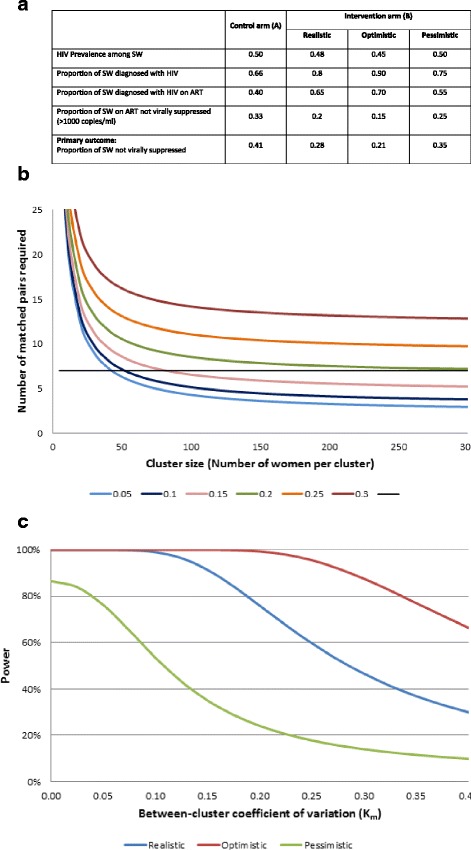Fig. 2.

Sample size considerations for the SAPPH-IRe Trial. Notes: (a) We estimated that in the comparison arm 41 % of SW will have a detectable viral load at 24 months. The breakdown of hypothesised effect of the intervention on HIV prevalence, the proportion of HIV infected women who are diagnosed, the proportion of diagnosed women who are on ART, and the proportion of women on ART with detectable viral load is shown in Table 2. We hypothesize that with realistic estimates of the size of the potential effect of our intervention on improving knowledge of HIV status among HIV-infected SW, decreasing time to treatment initiation and improving adherence, in the enhanced intervention arm (Arm B) 28 % of SW should be expected to have detectable viral load at the time of the final RDS survey. We also show more ‘optimistic’ and ‘pessimistic’ scenarios. (b) Number of matched paired of SW clinics (clusters) and number of women per site required to detect a reduction in proportion of women not virally suppressed (not on ART or virologically failing) from 41 to 28 % (80 % power, 5 % level of significance) for various values of the between-cluster coefficient of variation (km) in the proportion not virally suppressed within matched pairs. (c) Power and between-cluster coefficient of variation (km) in the proportion not virally suppressed within matched pairs for different scenarios for realistic, optimistic and pessimistic hypothesised intervention effects with 7 pairs of matched pairs and 200 women per cluster (5 % level of significance)
